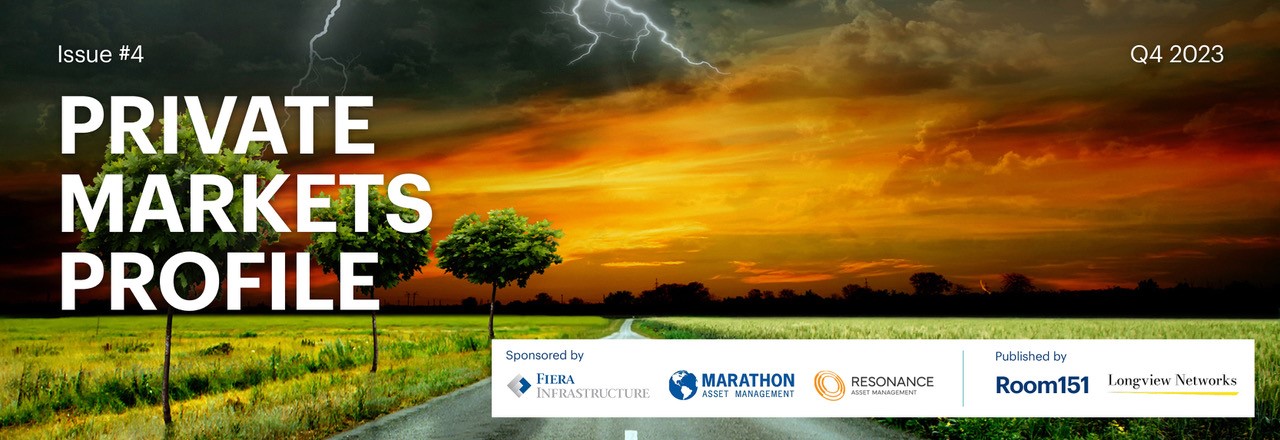
Higher rates pose challenge for renewables
As developers pull out of wind projects in the US and UK, how can investors in renewables protect themselves in an increasingly challenging environment?
As autumn clouds gather in the Northern hemisphere, they bring bad news for the renewable energy sector. In late October, Danish energy firm Ørsted, the world's largest offshore wind developer abandoned two major US wind projects and warned of higher than expected writedowns, causing its share price to drop by more than 20%.
Meanwhile, in the UK, the government attempted to auction for the construction of new windfarms in September this year, but the silence was deafening. The government offered 15-year contracts with more than five gigawatts of offshore wind energy capacity. But not a single company took on the offer, with the biggest developers, SSE, Vattenvall and ScottishPower having warned that the government’s pricing did not reflect that they had faced inflation of more than 40% across their supply chains.
Could this be a sign of things to come? With renewable energy assets facing headwinds of inflation and rising rates, how are investors adapting their portfolios to an increasingly challenging investment landscape?
Outlook: overcast
Much can change in twelve months. Over the course of a year, the US Federal Reserve, Bank of England and ECB base rates more than doubled to well above 5%, yields on long-dated government debt in developed market economies have shot up to the highest levels in 12 years.
Rising rates have left their mark on investments in renewable energy, where the effects have been most tangible in listed markets. Shares in renewable firms have dropped at a sharper rate than the wider market. The S&P Global Clean Energy Index, which includes shares in the biggest wind, solar and other renewables firms is down 29% year to date, against a 13% decrease for the S&P 500.
This is in part because the renewable energy sector is exposed to duration risks. Many firms are locked into long term contracts that fix the price at which they expect to sell energy.
They are now faced with a potential double whammy of rising supply side costs and higher interest rates. The effects of these new challenges are
coming through with some delays as many private market managers are producing only annual or bi-annual valuations. Moreover, some more conservative investors will have locked in longer-term refinancing rates and have therefore initially been sheltered from refinancing risks.
Nevertheless, the potentially higher levels of risk in private markets have not escaped the eye of the regulator: In the UK, the Financial Conduct Authority is now set to review private market valuations, amid growing concerns that the impact of rising rates and inflation has not accurately been disclosed.
Rising risks
So far, this has not deterred investors from allocating to renewable energy. Comprehensive data on the growth of the market is hard to come by due to its reach across asset classes. Assets in European energy infrastructure focused on the energy transition surged from €300 to €450bn as of September 2022.
In the UK, a number of LGPS Pools have recently included significant allocations to private market assets focused on the energy transition. Among others, Border to Coast announced this summer that it had doubled its climate investments which now stand at £1.4bn while Wales Pension Partnership pledged £68m to
local wind projects.
But despite continued investor appetite, a growing number of investors report that the market environment is becoming increasingly challenging. Jonathan Ord has been an investment director at LGPS infrastructure platform GLIL for more than eight years and has been involved in his fair share of renewable energy projects, from Hornsey One to Windparks in Ireland to battery plants.
While he is keen to stress that GLIL pursues investments where rates have been either locked in for the long term or refinancing has been staggered, he acknowledges that the platform now thinks differently about the returns from renewable energy assets.
“What we are really focused on is what the rising interest rates mean in terms of overall returns. With rising interest rates, everyone’s cost of capital is increasing. We want to be investing at a higher rate of return than we have done perhaps historically. That means we need to find assets that deliver on that,” Ord says.
Another new trend has been the growing gap between buyers and sellers, he warns. “When we are looking to acquire, say operational assets, our valuation is lower than the seller is willing to sell it at. That gap is now starting to close a bit and we’re starting to see more transactions happening. But if you look at the start of this year, there were fewer transactions signed.”
William Bourne, founder and director at Linchpin Advisory reports that many of his clients remain wary of risks in venture capital strategies in particular and tend to look towards exposure in listed markets instead.
He points out that listed renewable energy investment trusts have fallen from premiums of up to 30% to discounts of 20%, much as listed private equity has fallen to discounts of 40-50%. “This suggests that investors just don’t believe the NAVs that the managers are giving them.” The sharp drop in exit transactions means that valuations have not been verified by the market, which is a cause of further uncertainty.
“If valuations are 12 months old, a lot has changed since then. This is one of the reasons that some managers are selling some of their assets to try and establish a higher valuation to prove that this is a genuine price. I have seen that on a number of occasions over the last few months. But that hasn’t reassured investors particularly,” Bourne says.
Michael Ebner, head of infrastructure and renewable energy at KGAL warns that in the current market cycle, investments in presumably safer brownfield assets, whereby investors purchase existing production facilities, could turn out riskier than imagined. “We think that necessary market correction due to higher return expectations and pressures on energy prices has not yet fully been priced in. We believe that valuations for assets such as brownfield wind parks are stilltoo high and it could take some time for a new price equilibrium to settle,” Ebner warns.
Thinking long term
Do these new challenges mean that investors should stay clear of renewable energy assets for the time being? Bourne takes a cautiously optimistic approach. The falls in prices probably reflect much of the bad news, and investment is still needed to fund the energy transition, he says. Many of his clients are now turning towards the listed renewable energy market, where at least some of the bad news has now been priced in.
Despite these headwinds, Ord is convinced that there is still a good case for long-term investors to take on some of these market challenges and invest in renewable energy. The point of infrastructure platforms such as GLIL was always to take on the additional risks that come with funding earlystage renewable energy projects, he says.
“When we set up GLIL, we specifically wrote into our mandate that we could take on greenfield risk. That has always been important to our investors that we were able to not just buy operation assets but also to develop and build new infrastructure assets. Part of that thinking was around the nature of our capital being pension fund capital and they can take that long-term view,” Ord explains.
Ebner adds that experienced infrastructure investors are able to cushion the impact of inflation by pricing in higher risk adjusted returns and chosing from different offtake schemes. Feed-in tariffs or power purchase agreements can also help mitigate the effects of rising rates and inflation.
He also makes the point that for brownfield investors, now might be an opportune time to sell their assets, given that valuation for brownfield assets are still elevated.
Having said that, he believes that a market correction within the next six to eighteen months is highly likely.
Ord is keen to emphasise that for longterm investors, there is still a high level of opportunity in the energy transition: “The government talk about £90bn of capital that needs to be mobilised. As a large investor in the UK, that is very exciting. We don’t always need to be a first mover, but we are willing to look at new sectors.”
This is an edited version of an article first published in the latest Room 151 Private Markets Profile, the full issue can be accessed below.





